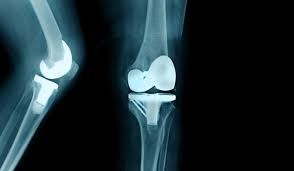A nurse is assessing a client who has malnutrition. Which of the following findings should the nurse expect?
Diplopia
Hyperproteinemia
Cachexia
Hypermagnesemia
The Correct Answer is C
Choice A Reason:
Diplopia is incorrect. Diplopia is double vision and is not a specific sign of malnutrition.
Choice B Reason:
Hyperproteinemia is incorrect - Malnutrition often leads to hypoalbuminemia (low levels of albumin, a protein), not hyperproteinemia.
Choice C Reason:
Cachexia is correct. Cachexia refers to a state of severe malnutrition and muscle wasting that can occur in individuals with chronic illnesses, especially advanced cancer, heart failure, or certain inflammatory conditions. It is characterized by significant weight loss, muscle atrophy, weakness, and fatigue. Cachexia goes beyond simple malnutrition and is a more severe manifestation of nutritional deficiency.
Choice D Reason:
Hypermagnesemia is incorrect - Malnutrition is more likely to cause deficiencies in minerals like magnesium, not excess levels (hypermagnesemia).
Nursing Test Bank
Naxlex Comprehensive Predictor Exams
Related Questions
Correct Answer is C
Explanation
Choice A reason:
Wound tissue firm to palpation is a false expectation. While firmness can be an indicator of healing in some wounds, it's not a reliable indicator on its own. The appearance and characteristics of the tissue, including granulation tissue, are more significant indicators of healing.
Choice B reason:
Dry brown eschar is a false expectation. Brown eschar is often necrotic tissue that needs to be removed for the wound to heal. Its presence typically suggests a lack of healing progress.
Choice C reason:
Dark red granulation tissue is the correct expectation because it is a sign of healing in a pressure ulcer. Granulation tissue is the new tissue that forms during the healing process, and the dark red color indicates that the tissue is well-vascularized and receiving adequate blood supply, which is essential for healing.
Choice D reason:
Light yellow exudate is a false expectation. Light yellow exudate is often indicative of infection or non-healing wounds. While some exudate is normal in the healing process, its color alone doesn't necessarily indicate healing.
Correct Answer is B
Explanation
Choice A Reason:
Gently massage the area around the client's incision is not recommendable. Massage may not be suitable for a recently operated area and could potentially worsen pain and disrupt the healing process.
Choice B Reason:
Apply an ice pack to the client's knee is recommendable. Applying an ice pack to the client's knee can help reduce pain and inflammation following a total knee arthroplasty. Ice can help numb the area and reduce swelling, providing relief to the client's discomfort. It's important to use a barrier, such as a cloth or towel, between the ice pack and the skin to prevent frostbite.
Choice C Reason:
Perform range-of-motion exercises to the client's knee is not recommendable. Range-of-motion exercises may be beneficial for recovery, but they might not be appropriate at this pain level. Pain should be managed before engaging in such activities.
Choice D Reason:
Place pillows under the client's knee is recommendable. Elevating the knee might help with comfort, but addressing the pain directly should be the priority.

Whether you are a student looking to ace your exams or a practicing nurse seeking to enhance your expertise , our nursing education contents will empower you with the confidence and competence to make a difference in the lives of patients and become a respected leader in the healthcare field.
Visit Naxlex, invest in your future and unlock endless possibilities with our unparalleled nursing education contents today
Report Wrong Answer on the Current Question
Do you disagree with the answer? If yes, what is your expected answer? Explain.
Kindly be descriptive with the issue you are facing.
